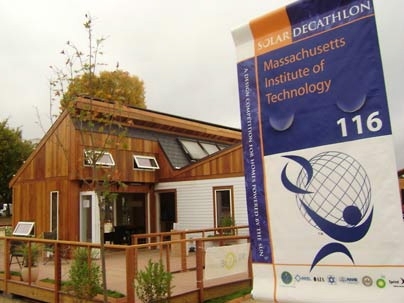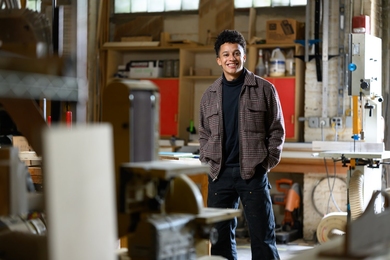MIT's first Solar Decathlon team has already applied the principles of engineering design to the experience of competing in the 2007 Solar Decathlon Contest, sponsored by the Department of Energy and held Oct. 12-20 on the National Mall in Washington, D.C.
Was the machine robust? Did it embody repeatability? What worked? What didn't? And--the most MIT question of all--when can we get started on the next one?
For team member Diana Husmann, a senior majoring in physics, what worked was Solar7's success with the 25,000 visitors who toured the 20 student-built solar homes that competed in the 10-day event.
"Our biggest reward was listening to the 'everyday' people who toured Solar7. Although we got 13th in the competition, we were very popular with the tourists. And since the point of the competition was to show that solar can be both powerful and beautiful, we all agreed that in the end, we were a complete success," she said.
Husmann also noted challenges the team met, including fundraising. "We were one of the smallest and least-funded teams to compete, but it gave us all the chance to learn how to work on basic leadership and money management," she said.
Solar7 faculty advisor Kurt Keville, research specialist at the Institute for Soldier Nanotechnologies, saw MIT's success in a different light--teamwork, energy balance strategy and capacity to bear suspense.
Recalling the night the team made the tough decision to unplug their electric car in order to charge the house battery, Keville said, "It was nail-biting time as we watched the battery charge meter with one eye and the clock with the other. It ended up being the right decision. We ended up first in 'Energy Balance.'"
As for the most MIT question of all, the MIT team is already rolling. Planning for the next Solar Decathlon, to be held in October 2009, begins next month.
"We're going to ask MIT for more support and try to find professors willing to take on the challenge of doing even better the next time around," Husmann said.
A version of this article appeared in MIT Tech Talk on November 7, 2007 (download PDF).






